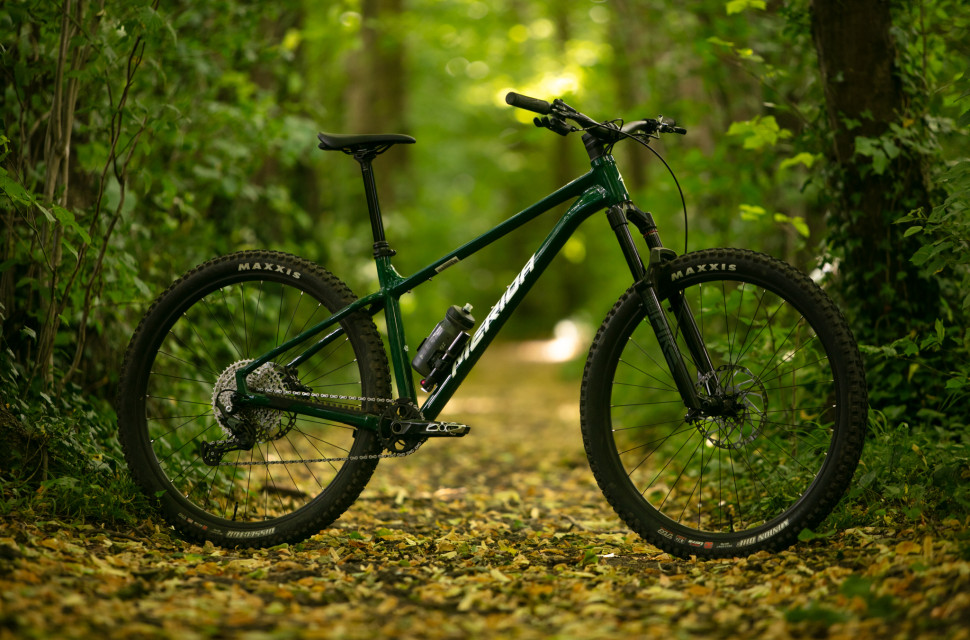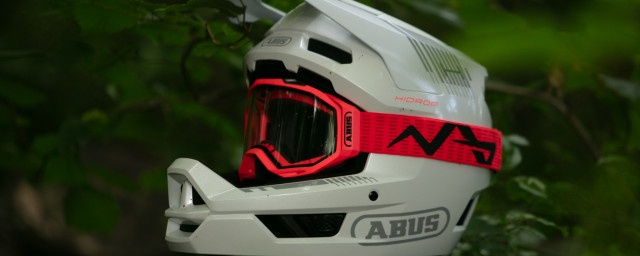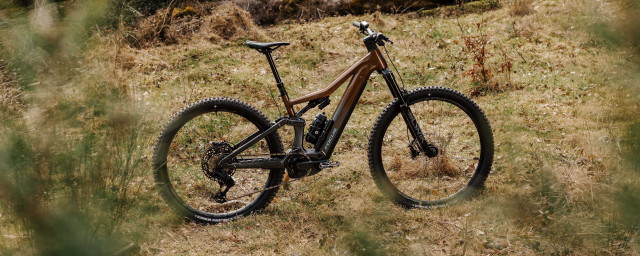Merida Big.Trail 600 first ride review - Great price, great geo, exceptional ride

Starting life as a plus-tyre bike in 2016, Merida’s Big.Trail has gone through a few iterations since its release with each of them going down well with our testers. Merida once again overhauled its trail hardtail, bringing its geometry up to date while bestowing it with technologies and concepts cemented by its One-Forty and One-Sixty mountain bikes. We got some time with the bike ahead of its launch and here are our early impressions.
- Merida Silex 10k first ride review
- Best mountain bikes 2024 - top options from cross-country to Enduro
- Merida eOne-Sixty 875 first ride review
Merida says that the hardtail mountain concept is still the dominant type of MTB that also forms the stepping stone into the sport for loads of people. When it first arrived on the scene, the Big.Trail was introduced to appeal to those riders and provide a sorted trail ride at an affordable price. With its latest model, that hasn’t changed but the brand has taken what was already a solid bike and packed it with themes seen on its modern full sussers, giving it a revised, trail-focussed geometry.
A well-equipped geometry can make or break a hardtail, and hauling the Big.Trail into 2024 are several tweaks such as 64-degree head tube angle which is one and a half degrees slacker before. There’s a 76.5-degree seat tube angle, which is a full degree steeper and the bottom bracket is 3.5mm lower, at 70mm. Importantly, reach figures stretch across the size range by 20mm – on the large frame pictured here, there’s a 480mm measurement.
All of these changes have been implemented to make the Big.Trail a more capable climber, as the seat tube shifts weight forwards a bit to keep both wheels better planted on the ground whereas the head angle and BB are slated to up stability when things get steep.
Introduced with the One-Forty and One-Sixty a couple of years ago, Merida’s Agilometer sizing makes its way onto the hardtail. In a nutshell, this idea welcomes short head tubes, short seat tubes and long travel dropper posts to provide riders more flexibility in the frame size they choose. Taller riders can fit on shorter bikes for more agility whereas shorter riders can size up easily to gain a more stable bike.
As for those dropper post travels, the X Short frame gets a 150mm dropper, Short and Mid gets 170mm of dropper travel whereas Long and X Long frames get 200mm. X Long then benefits from a lengthy 230mm drop. Though, it’s worth noting that the dropper posts specced on the Big.Trail models aren’t Merida’s travel-adjust droppers to keep prices low but the fat 34.6mm diameter seat tubes can accommodate an upgrade to those adjustable droppers if that’s your thing.
Other new features come in the form of the Wire Port which is essentially headset-routed internal cabling but here the cables are also routed through foam sleeves to deaden rattle. Threads for Merida’s hard-mount rear fender are present as is UDH compatibility, so if you’re feeling mega-fancy, you can run SRAM’s latest T-Type drivetrains or just revel in the fact you can buy a new mech hangar at any bike shop. There’s also a new chainstay protector that’s shaped to keep chain slap to a minimum.
But with all of that newness, the Big.Trail isn’t without some staple Merida features such as the integrated tools found at the rear axle and under the saddle.
The bike’s still a full 29er too and there’s 140mm of suspension while the bike can run up to 150mm without negatively affecting the ride. There are several mounting points, too, with three in the front triangle, two for bottle cages one for accessories. The Big.Trail can also accommodate a kickstand and the like.
For a deeper dive into what makes the new Big.Trail tick, here's the news story.
Merida Big.Trail 600 - Componentry
Here, we’ve got the Big.Trail in its top-of-the-range 600 build which will set you back £2,000. For that money, you get that alloy frame with a RockShox Pike bolted to the front with that 140mm of travel. Merida has kitted the bike with a Shimano Deore 12-speed drivetrain but, impressively, with Shimano’s XT four-piston brakes both front and rear. Those are paired with rather large 203mm rotors, which is fantastic to see.
Elsewhere, the rest of the bike is finished off with Merida’s own kit but its wheels are shod with an upgraded tyres spec. So rather than the Exo-cased Maxxis Dissectors that adorned the bike before, there’s now a Maxxis Minion DHF in a 2.4in width and Exo casing at the front paired with a 2.4in Dissector at the rear but in a beefier Exo+ casing, which makes an awful lot of sense for a hardtail of this ilk.
But that upgrade in tyre spec is very welcomed because the more aggressive DHF will provide better performance through a greater range of conditions straight out of the box. During my test of the previous generation Big.Trail, that’s the exact tread spec I ran for that very reason.
Merida Big.Trail 600 - Ride impressions
Although the Big.Trail is a bike that’s historically reviewed well on off.road.cc, its previous design carried one glaring issue – it was short. Its large size came with a 455mm reach which, by modern standards, doesn’t quite cut it for a trail bike. However, as that build came with a super short seat tube, it was incredibly welcoming of sizing up, so I opted for an XL frame, which resulted in a more on-trend geometry.
That is an issue that the latest iteration directly addresses as part of the Big.Trail’s move towards Merida’s Agilometer sizing concept, so the Long (large equiv) frame comes with a lovely 480mm reach and fits me rather well. When sitting on the bike, the new steeper seat tube then comes into play, making what would be a roomy cockpit a little more compact but far from cramped. It’s spot-on, keeping my back straight and weight superbly balanced between the wheels.
Merida’s tyre spec takes some of the credit for the solid pedalling dynamic, too, but it’s great to see a more aggressive front tyre coming as standard. The double Dissector setup on the previous bike was good, but the tyre would struggle in looser conditions, a trait that the DHF sorts out reasonably well but without a huge penalty to rolling resistance.
Of course, there’s no rear suspension here so as with every hard tail, the Big.Trail lives or dies on solid geometry choices and the brand says that it’s one of the most progressive hardtails around. For the price, I certainly agree but compared to the likes of Radical Bicycle Co.’s Grim Ripper it looks a lot more sensible. Although it must be said that bikes like the Grim Ripper are built to be proper aggro for the more experienced hardtail fanatic who wants something a little mental and boutique. The Big.Trail isn’t that nor is it meant to be but, in this price bracket, it certainly stands out.
What Merida has created is a geometry that’s both welcoming to new riders and one that’ll be appreciated by those with more miles under their belts. Either while climbing or descending, the Big.Trail will provide the rider with confidence. Startlingly, I was able to drop into my first few descents (that I hardly knew, might I add) at full attack and the bike simply enabled me to do so without throwing a proverbial stick in the spokes.
A lot of that has to do with the relationship between the 64-degree head angle, 480mm reach and that lower bottom bracket. All of those figures combine to inspire tonnes of confidence both through an impressive level of stability but also because weight feels low and almost as if the centre of gravity is well behind the front axle. This then makes speeding into more challenging terrain easy as it rustles up a large level of trust in the fork's ability to do its job.
That trio of measurements also makes the bike excellent fun in the turns, where the lower centre of gravity and the length help the Big.Trail holds its line while sitting confidently in a lean. Then, as the chainstay isn’t too long, there’s a good helping of zest and liveliness when the corners come thick and fast.
This is an alloy frame and unlike bikes like the Orbea Laufey, Merida hasn’t spent time to promote compliance in the frame. While this does great things for financial savings, the Big.Trail is naturally on the harsher side but rather than the frame, I would attribute this to the 2.4in rear tyre width.
Where this makes the tyre very stable on the rim under heavy cornering loads, its lesser volume transmits a fair bit of feedback to the feet. Although it's not official, I’m told that the Big.Trail can house a 2.5in tyre, so that’ll help things and I reckon a tyre insert would lend a hand in making the bike more comfortable, too.
I don’t think we can talk about this bike and ignore the value on display here. Firstly, the bike rides very well so that’s a big tick in the value box but this 600 build of the Big.Trail gets a purposeful spec list that’s full of componentry that does its job exceedingly well. The Deore drivetrain is wonderfully slick for the cash and I’m a big fan of the new tyre spec as it makes all of the sense for the kind of riding that the bike encourages.
But what really wins it for me is the fact there’s a pair of Shimano XT brakes. Despite the fact they’ve had a tumultuous few years, modern units are as reliable as they are powerful and it’s fantastic to see decent-sized rotors here that match the Big.Trail’s capability. It’s all too often that great hardtails are limited by little discs.
The last version of the Big.Trail, despite its quirks, was a great bike and Merida has done a great job of improving it, making it a progressive and accessibly priced hardtail – it’s a welcoming machine for new riders. Its geometry is almost a cut-and-paste of modern full-suspension trail bikes while taking full advantage of the fact it’s not a full-suspension bike. So you get that tenacity in the corners as a result of its low BB that inspires confidence at speed.


















